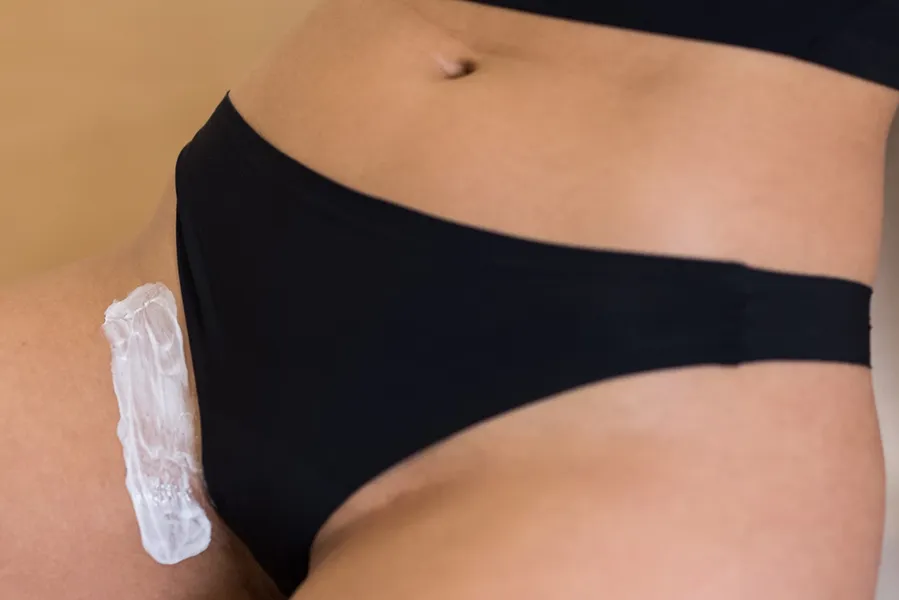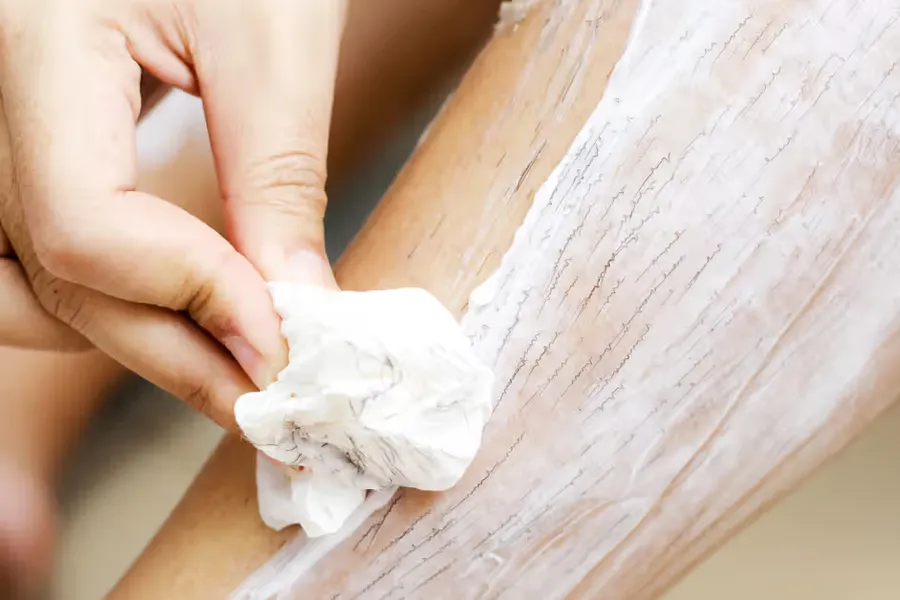Understanding Depilatory Creams
Have you ever wondered how you can achieve smooth skin without the hassle of shaving? That’s where depilatory creams come in! These are specially formulated products designed to dissolve hair just below the skin’s surface, making hair removal quick and easy.
Depilatory creams work by using active ingredients, such as calcium thioglycolate or potassium thioglycolate, that break down the protein structure of your hair. This allows you to simply wipe away unwanted hair in a matter of minutes. They’re often used on areas like the legs, arms, and underarms, but what about the more sensitive regions?
In this article, we’ll explore whether depilatory creams are safe and effective for private parts, how to use them correctly, and what precautions you need to take. Say goodbye to razors and welcome an alternative that might just fit your needs!
What Are Depilatory Creams?
Understanding what depilatory creams are is key before you consider using them, especially on sensitive areas. Let’s break it down.
The Basics of Depilatory Creams
Depilatory creams are hair removal solutions that work by using chemical processes to dissolve hair just below the skin’s surface. Unlike shaving, which cuts hair at the skin’s surface level, these creams break down the proteins in the hair structure, making the hair easy to wipe away.
Some common active ingredients in these creams include:
- Calcium thioglycolate
- Potassium thioglycolate
- Sodium hydroxide
These compounds create a chemical reaction to liquefy the hair, which can then be simply wiped off with a cloth or washed away.
Types of Depilatory Creams
Depilatory creams come in various formulations to suit different hair types and skin sensitivities. Here are some common types you might encounter:
- Regular Formulations: Designed for legs, arms, and other areas with coarse hair.
- Sensitive Skin Formulas: These include gentler ingredients to lessen irritation, making them suitable for delicate areas.
- Fragrance-Free Options: If you’re sensitive to scents, these creams are a great choice, ensuring a more pleasant experience without overpowering fragrances.
Real-World Application
Using depilatory cream can be as easy as applying lotion. Picture this: you’re getting ready for a beach day, and you want smooth legs without any of the nicks or cuts that can accompany shaving. You simply apply the cream, wait a few minutes according to the instructions, and wipe it away to reveal fresh, hair-free skin. No fuss, no fuss!
What to Expect When Using Them
Applying depilatory creams involves a few straightforward steps:
- Patch Test: Always start with a small patch test on a less sensitive area to check for any allergic reactions.
- Application: Use an applicator or your hands to evenly cover the area you wish to treat, avoiding contact with any particularly sensitive skin.
- Wait Time: Follow the product instructions meticulously, as leaving the cream on for too long can lead to irritation.
- Removal: Wipe off with a damp cloth and rinse the area thoroughly with cool water.
However, the thought of applying these creams to sensitive areas like the bikini line should give you pause. It’s essential to understand if your private parts can handle such a chemical approach, which we’ll dive into next.
With all this in mind, let’s continue exploring how suitable depilatory creams are for sensitive areas!
Suitability for Sensitive Areas
When it comes to using depilatory creams on private parts, it’s crucial to consider skin sensitivity and the unique characteristics of this area. Let’s delve into the factors that determine whether these creams are appropriate for your intimate regions.
Understanding Skin Sensitivity
Your skin’s sensitivity varies not just from person to person but also across different areas of your body. The skin around your private parts is often thinner and more delicate than skin on your arms or legs. This sensitivity means that while you might find a depilatory cream effective on your legs, it could lead to irritation or discomfort in your bikini line or other sensitive areas.
Hair Type Matters
Another significant factor to consider is hair texture. Hair in your private regions tends to be coarser and denser, which can affect how well depilatory creams work. If you have thick or curly hair, you may need a more potent formulation, which could increase the risk of irritation.
Patch Testing is Essential
Before applying depilatory cream extensively in sensitive areas, always start with a patch test. Apply a small amount of the cream on a less sensitive spot, such as the inner thigh, and wait the recommended time. If you don’t experience any adverse effects, you may proceed with caution. Remember, even if you’ve used depilatory creams elsewhere without issue, sensitive skin can react differently.
Choosing the Right Product
If you decide to try depilatory creams on your private parts, look for formulas specifically designed for sensitive skin. Many brands offer gentler versions that contain soothing ingredients such as aloe vera or vitamin E, which can help mitigate irritation. Here are a few tips for choosing a suitable product:
- Read Labels: Always check for phrases like “suitable for sensitive skin” or “dermatologist-tested.”
- Fragrance-Free Options: Products that are free from fragrances often result in less irritation.
- Natural Ingredients: Some depilatory creams incorporate natural ingredients that can help soothe the skin during the hair removal process.
Safety First
If you feel any burning or tingling sensation while using a depilatory cream, it’s best to remove it immediately and rinse the area with cool water. Prolonged exposure could lead to chemical burns and discomfort, which is something everyone wants to avoid, especially in delicate areas.
We’ll now move forward to discuss how to safely use depilatory creams and ensure the best experience possible.
How to Use Depilatory Creams Safely
Using depilatory creams can be a convenient method for hair removal, but especially for private areas, it’s essential to apply them carefully to minimize the risk of irritation or adverse reactions. Following a step-by-step approach will help you achieve smooth skin safely and effectively. Here’s how to do it right:
Step 1: Gather Your Supplies
To ensure a smooth application process, gather the following items before you start:
- A depilatory cream suitable for sensitive skin.
- An applicator spatula or your fingers (make sure your hands are clean).
- A damp washcloth or sponge.
- A timer or clock to monitor your application time.
- Optional: Moisturizing lotion or aloe vera gel for aftercare.
Step 2: Perform a Patch Test
Before applying the cream on a larger area, always conduct a patch test:
- Apply a small amount of cream on a less sensitive spot, like the lower inner thigh.
- Leave it on for the time recommended on the package, typically 5 to 10 minutes.
- Rinse the area and observe for any reactions—redness, soreness, or irritation over the next 24 hours.
If all is well, you can move on to the next steps.
Step 3: Clean the Area
Before applying the cream, clean the selected area where you want to remove hair. Use warm water and a gentle soap to ensure there is no dirt, oil, or other products on the skin. Pat the area dry with a towel.
Step 4: Apply the Cream Evenly
Using the applicator or your fingers (wear gloves if using your hands), apply a generous, even layer of depilatory cream over the area. Make sure to cover all the hair you want to remove, but avoid excessive application. Be cautious not to apply too close to sensitive areas; if you feel uncertain, it’s better to err on the side of caution.
Step 5: Monitor the Time
Set a timer for the recommended application time indicated on the product’s packaging. It’s typically between 5-10 minutes, but this can vary based on the cream and the thickness of your hair. Do not exceed the maximum time, as this could lead to irritation.
Step 6: Remove the Cream
Once the time is up, use the damp washcloth or sponge to gently wipe the cream away, along with the dissolved hair. Rinse the area thoroughly with cool water to remove any residual cream. Avoid scrubbing, as this could irritate your skin.
Step 7: Moisturize
After rinsing, pat the area dry and apply a gentle moisturizer, like aloe vera gel or a fragrance-free lotion, to soothe the skin post-treatment. This step can help prevent irritation and keep the skin hydrated.
Step 8: Observe Your Skin
For the rest of the day, keep an eye on the treated area. If any redness or discomfort occurs, avoid tight clothing and refrain from applying other products until the skin calms down.
Safety Tips to Remember
- Avoid Sun Exposure: Post-treatment, your skin may be more sensitive. Keep the area out of direct sunlight for at least 24 hours.
- Consult if Unsure: If you’re ever in doubt or feel unexpected discomfort, don’t hesitate to reach out to a healthcare professional.
Using depilatory creams can be an effective method for maintaining smooth skin, especially in sensitive areas, provided that you follow these careful steps. Next, we’ll discuss potential risks and side effects to ensure that you’re fully informed before making your decision in hair removal methods.
Potential Risks and Side Effects
When considering depilatory creams for your private parts, it’s essential to be aware of the risks and side effects that can arise. While many find these creams effective and convenient, there are potential downsides that can impact your experience. Let’s break it down.
Allergic Reactions
One of the most significant risks associated with depilatory creams is the possibility of an allergic reaction. The chemical compounds used in these products can be harsh on sensitive skin, leading to symptoms such as:
- Redness
- Swelling
- Itching
- Rashes
If you have known allergies or sensitive skin in general, it’s especially crucial to conduct a patch test before widespread use. This simple test can prevent a potential discomfort that might arise when using the product on more delicate areas.
Skin Irritation
Even if you don’t have an allergy, you might still experience skin irritation. The active ingredients in depilatory creams, like calcium thioglycolate or potassium thioglycolate, work by breaking down hair proteins, but they can also disrupt your skin’s natural barrier. Symptoms of irritation may include:
- Burning sensations
- Stinging
- Dry, flaky patches
To mitigate irritation, always follow the product’s guidelines, especially regarding application time. Leaving the cream on longer than recommended can lead to excessive exposure and skin damage.
Chemical Burns
In more severe cases, improper use of depilatory creams can result in chemical burns. This risk is heightened in sensitive areas where the skin is thinner. Indicators of a chemical burn may include:
- Blistering
- Extreme redness
- Severe pain
If you notice any of these signs, it’s vital to remove the product immediately and rinse the area with cool water. In extreme cases, seek medical attention to avoid complications.
Discoloration
Some users report skin discoloration after using depilatory creams, particularly on areas that are already sensitive. This could manifest as:
- Darkening
- Lightening of the skin
While this may not happen to everyone, it’s worth considering, especially if you have darker skin tones where discoloration can be more noticeable.
Increased Hair Growth
Interestingly, some users have noted an increase in hair growth after using depilatory creams, particularly if used repeatedly on the same area. This could be due to hair becoming thicker or coarser over time. If you prefer a more gradual approach to hair removal, this could be a factor for you to consider.
Safety First
To reduce the risks associated with depilatory creams:
- Always conduct a patch test, as discussed before.
- Stick to formulations designed for sensitive skin.
- Follow all application guidelines carefully.
- Regularly monitor your skin’s reaction during and after use.
Understanding these potential risks and side effects will empower you to make a more informed decision about whether to use depilatory creams on private parts. As we move on, let’s explore some alternatives to depilatory creams for hair removal that may better suit your needs!
Alternatives to Depilatory Creams
If you’re feeling uncertain about using depilatory creams on your private parts, you’re not alone. Thankfully, there are several other hair removal methods that you can consider. Each option has its pros and cons, but what’s most important is finding one that fits your needs and comfort level. Let’s explore some of these alternatives!
Shaving
Shaving is one of the most common methods for intimate hair removal, primarily due to its convenience and accessibility. With the right tools and techniques, you can achieve smooth results without the risks associated with chemical depilatories.
- Tools: Invest in a high-quality razor designed for sensitive areas. Look for options that feature protective barriers or moisturizing strips to minimize irritation.
- Technique:
- Start by trimming longer hair to avoid razor clogging.
- Use a hydrating shaving cream or gel to provide a protective layer. This helps the razor glide smoothly and reduces the risk of cuts.
- Shave in the direction of hair growth to prevent ingrown hairs and irritation.
- Rinse with cool water afterward and apply a gentle moisturizer to soothe the skin.
Waxing
Waxing is another popular option, offering longer-lasting results compared to shaving. This method pulls hair from the root, which can mean extended periods of smooth skin before regrowth begins.
- Types: You can opt for hard wax or soft wax, with soft wax typically needing a cloth strip for removal while hard wax becomes its own strip.
- At-home Kits vs. Professionals: You can purchase at-home waxing kits or visit a salon for professional help. If you’re new to waxing, a professional may be your best bet initially due to the precision and technique required.
- Pros: The results can last three to six weeks, and over time, some users find their hair grows back finer or sparser.
Laser Hair Removal
For a more long-term solution, consider laser hair removal. This option uses concentrated light to target and destroy hair follicles, resulting in prolonged hair reduction.
- Consultation Required: It’s important to consult a professional before choosing this method, especially in sensitive areas. They’ll help determine if you’re a good candidate and what to expect during the treatment process.
- Sessions: Multiple sessions are usually required for optimal results. Keep in mind that this method can be more costly than others but may save you time and effort in the long run.
Electrolysis
Electrolysis is another long-term hair removal method that works by permanently destroying hair follicles through electrical currents. This method can be used on any part of the body, including sensitive areas.
- Time-Consuming: It generally requires several sessions and can take time to see full results since it targets hair follicles individually.
- Regulatory Standards: Ensure you go to a certified and experienced technician to minimize risks and achieve the best results.
Choosing the Right Alternative
When considering these alternatives, think about factors like your pain tolerance, desired results, budget, and the time you can dedicate to hair removal. Each method has its unique advantages, so take the time to determine what feels best for you.
You now have a range of options if depilatory creams aren’t the right fit. Each method comes with its own set of advantages that can align with your personal preferences and lifestyle. As you move forward in your hair removal journey, remember the importance of choosing a method that feels safe and comfortable for your skin.
Now, let’s wrap up all this information and help you make the right choice for you in the conclusion.
Making the Right Choice for You
As you consider whether depilatory creams are suitable for your private parts, it’s essential to weigh the information shared in this article against your unique skin type and personal preferences. Depilatory creams can offer a convenient solution for hair removal, but they may not be the best fit for everyone, especially in sensitive areas.
Remember to take your time, conduct a patch test, and follow safety guidelines if you choose to proceed. If you have any doubts, don’t hesitate to explore alternative hair removal options that might align better with your needs. Ultimately, the goal is to find a grooming method that leaves you feeling comfortable and confident. Happy grooming!









I’ve been looking for alternatives to creams—anyone tried sugar waxing? Seems more natural? Thoughts?
I’ve never tried sugar waxing but I’ve heard it’s less irritating! If you’re allergic to some of the ingredients in creams, it could be a good option to explore.
Sugar waxing can be a great alternative, especially for those with sensitive skin! Just be careful as it can be tricky to master at first.